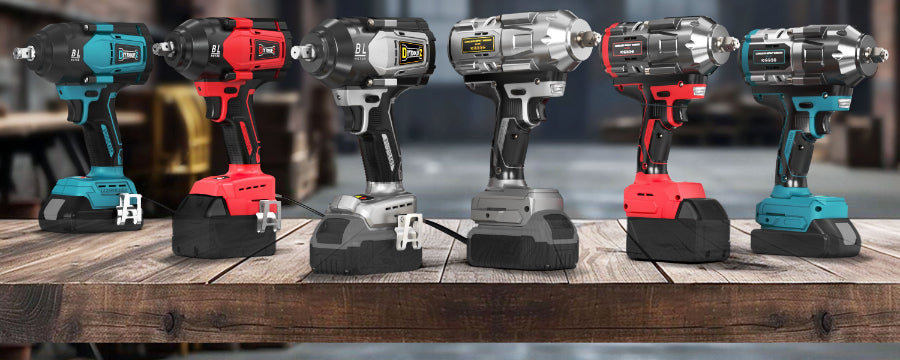
HOW TO USE A CORDLESS IMPACT WRENCH IN TIGHT SPACES
Tight spaces. They’re the bane of every mechanic, DIY enthusiast, and weekend warrior. That stubborn bolt buried deep in an engine bay, the nut tucked against a frame rail, the fastener hiding behind suspension components - they seem designed to test your patience. But fear not! Your cordless impact wrench, that trusty powerhouse, can conquer these confined battlegrounds. You just need the right approach and a few clever tricks.
6 Pro Strategies for Tight-Space Triumph
1. Choose the Right Size Wrench for the Job
Impact wrenches come in a variety of sizes: full-size (1/2"), compact, stubby, and even ultra-compact models (like 3/8" or 1/4"). If you know your project will involve confined areas, investing in a stubby impact wrench is a game-changer. Stubby models are significantly shorter in length, making them easier to maneuver in narrow gaps. 3/8" or 1/4" drive models offer better access for lighter-duty tasks where full torque isn’t required.
2. Use Extensions and Swivel Adapters
Accessories make a world of difference in tight quarters. When your wrench body can't fit into the space, a high-quality extension bar can bridge the gap between the tool and the fastener.
- Swivel or wobble sockets provide just enough angle to reach around obstructions.
-
Flex extensions are excellent when the bolt is offset or misaligned with your wrench’s reach.
- Use impact-rated accessories. Standard extensions may break under the high torque output of an impact wrench.
3. Leverage LED Work Lights
Tight spaces often mean poor lighting. Luckily, Livowalny cordless impact wrenches include built-in LED lights. Clear visibility helps you position the socket correctly, avoid cross-threading, and work more safely and efficiently.
4. Use Controlled Torque Settings
Livowalny cordless impact wrenches now include multiple speed or torque modes - sometimes called auto-stop or precision settings. These are especially useful in tight spots where you don’t have space to control the tool’s reaction manually and you need to avoid over-torquing delicate fasteners.
5. Secure Your Workspace and Body Position
Awkward angles in small areas can increase the risk of wrist strain or tool slippage, making control and stability essential. To work safely, anchor your body to prevent losing balance during sudden impacts, and use both hands whenever possible - one to operate the tool and the other to steady yourself. If one-hand operation is unavoidable, brace your forearm or elbow against a solid surface to maintain control and reduce fatigue.
6. Practice Before You Commit
If you're working with rusted or stuck bolts in a tight space, it's smart to first test your wrench and socket setup in an open area. This allows you to check fitment, angle, and clearance before committing to the actual workspace - saving time, protecting the bolt head, and reducing the risk of damaging your tool or accessories.
Using a cordless impact wrench in tight spaces doesn’t have to be frustrating. With the right size tool, smart accessories, and careful planning, you can tackle confined tasks with confidence and precision.
Whether you're wrenching on suspension bolts in a narrow wheel well or fastening hardware behind cabinetry, mastering these techniques will make your cordless impact wrench even more versatile and essential.






